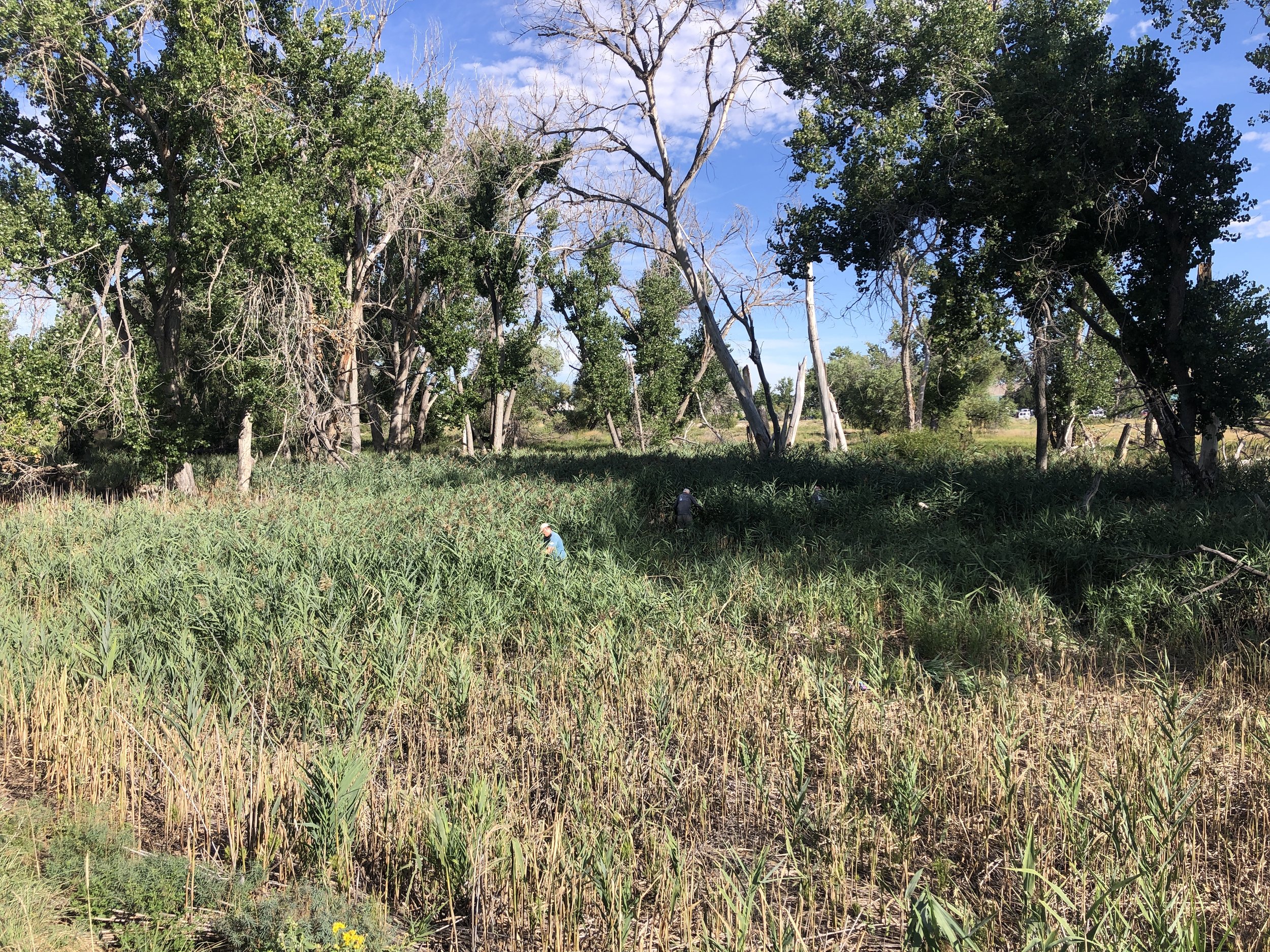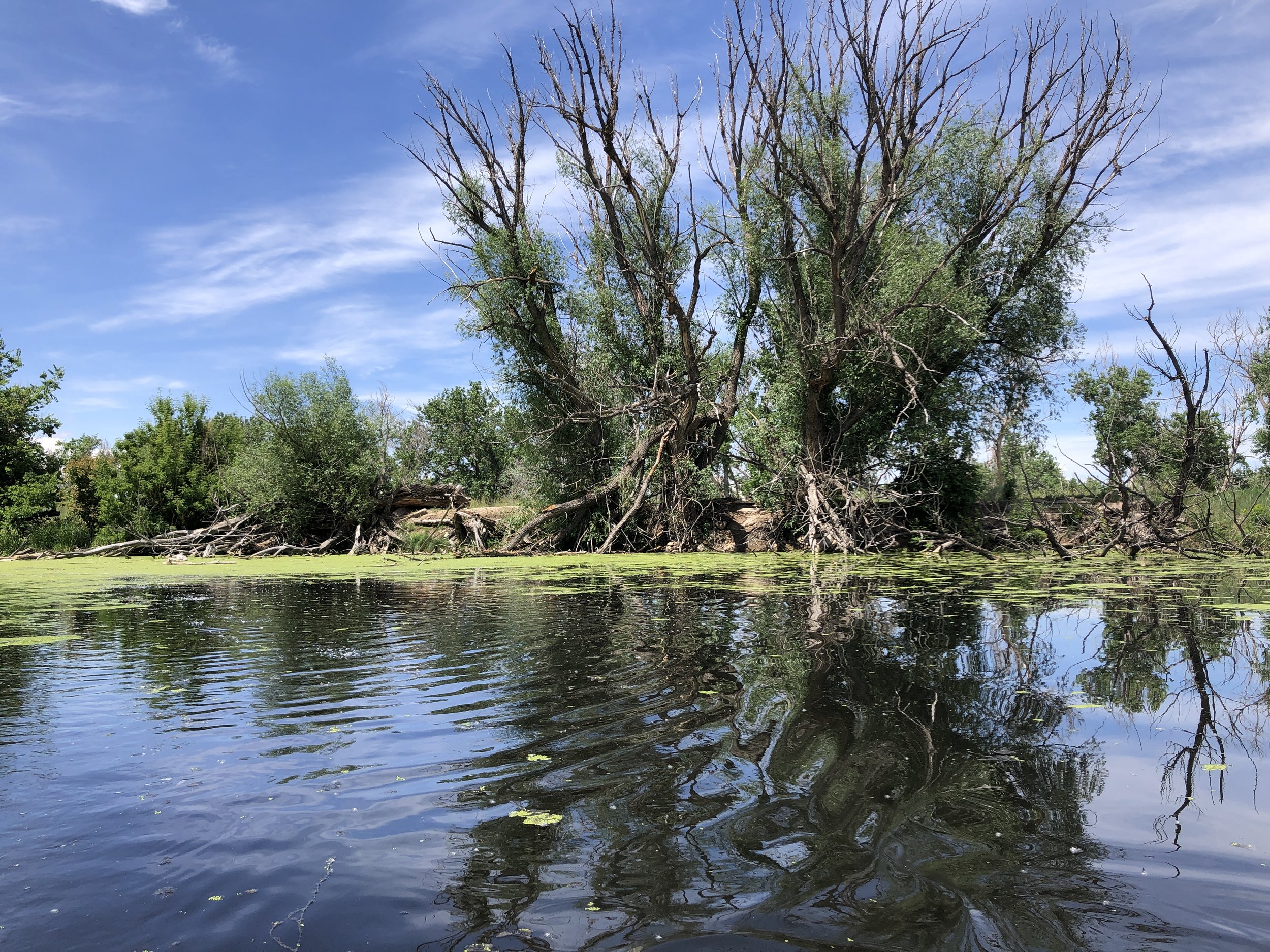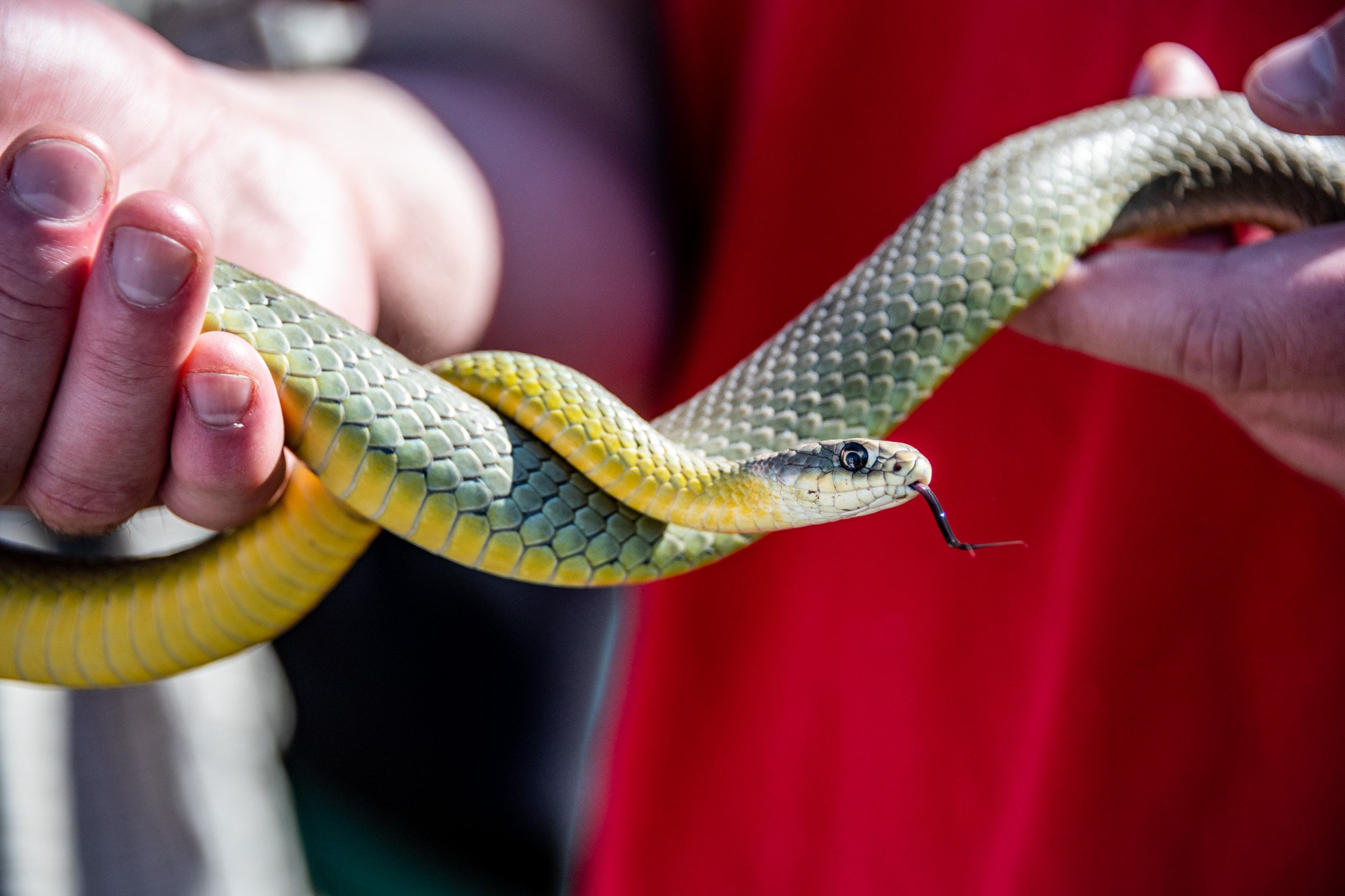
SURVEYS & RESEARCH
The Bluff Lake team is proud to manage a unique urban wildlife refuge and outdoor classroom. Our current and past Natural Resources Directors and interns have conducted various research projects to better understand how to protect and improve the Bluff Lake ecosystem and its inhabitants. The goals of these projects are to gain scientific insight into land management practices, ecosystem health, and wildlife and invertebrate populations.
We would love to share some of the amazing work our current Natural Resource Director, Tess Robeson, has been working on. Learn more about Bluff Lake’s research by reading our 2023 Natural Resources Report.
Scroll down and learn about some of our surveys and research projects!
Invertebrate Survey
Invertebrates are the most diverse group of animals that live in Bluff Lake. Since 2022, we have launched a scientific study to try and identify the different species of invertebrates that live on our site. To do this survey, we used three different survey methods to catch invertebrates around our site. These methods were pitfall traps, sweep nets, and hanging traps. For each method, we examined the caught invertebrates one by one to determine their species. We surveyed different vegetation spots across Bluff Lake to determine which vegetation and habitat type supports the most invertebrate biodiversity. The habitat types are ephemeral pools, wetland, prairie, and woodland habitats.
Between the pitfall trap surveys and sweep net surveys of 2022, we identified 36 invertebrates down to species, 25 to genus, five to subfamily, 14 to family, two to suborder, and four to tribes. Of the 36 species identified, 25 were new to Bluff Lake, and the surveys documented 44 genera for the first time at Bluff Lake!
According to the pitfall trap surveys, the most diverse habitat was the woodland habitat with 14 taxa identified. The least diverse habitat was the wetland habitat with only 9 taxa identified (See Table 1).
TABLE 1
TABLE 2
In the sweep net surveys, two sites containing willows and other riparian vegetation along Sand Creek were the most diverse, representing 14 taxa at each site. The least diverse site had vegetation such as gooseberry, currant bushes, and boxelders. Only seven taxa were documented in this vegetation (See Table 2).
Across both survey methods, the two most common groups were beetles and true bugs!
During our 2023 survey, only the sweep nets method was successful. No invertebrates were collected from the hanging traps and the heavy summer rains led to unsuccessful pitfall traps. Data still needs to be analyzed.
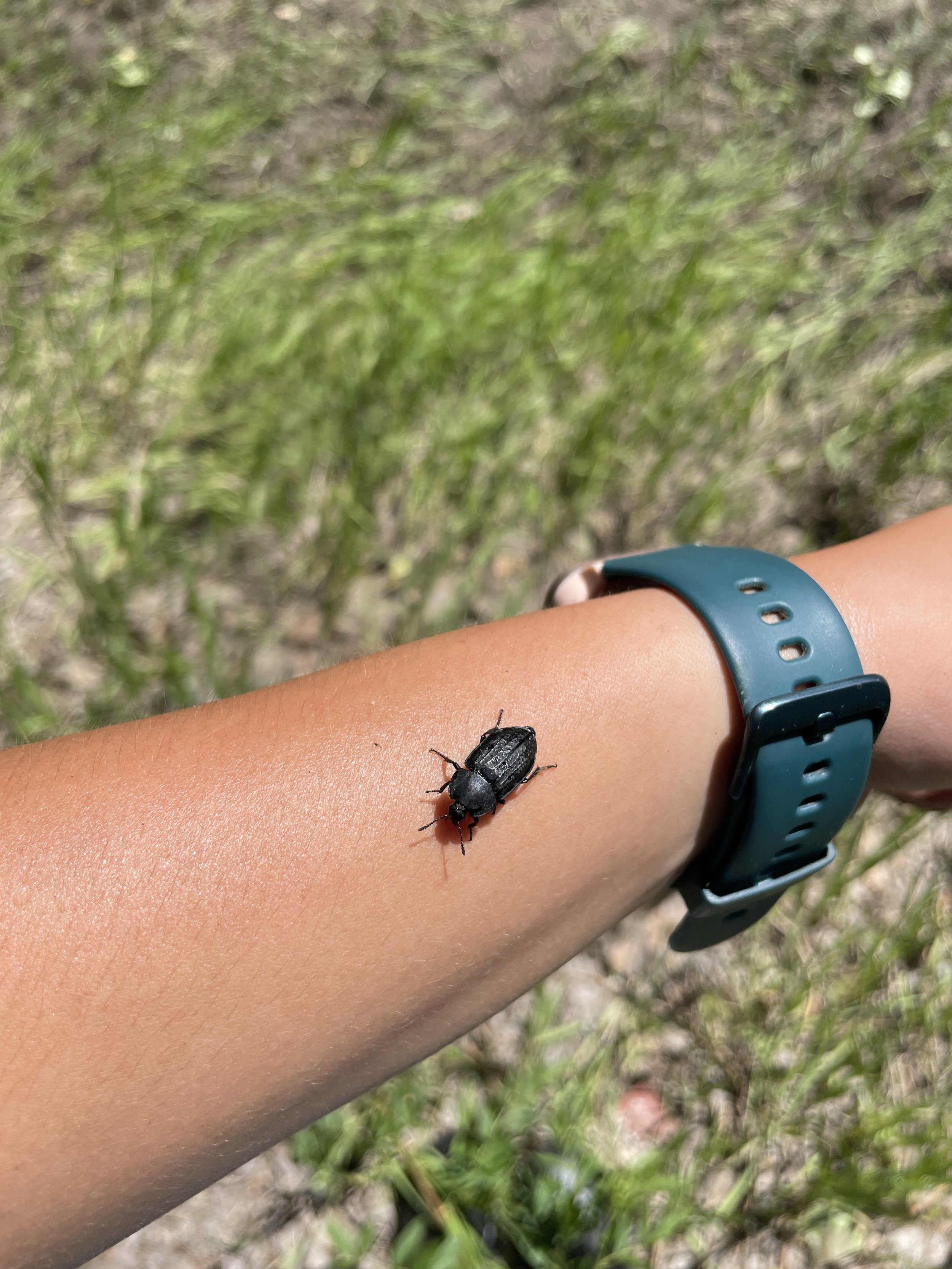
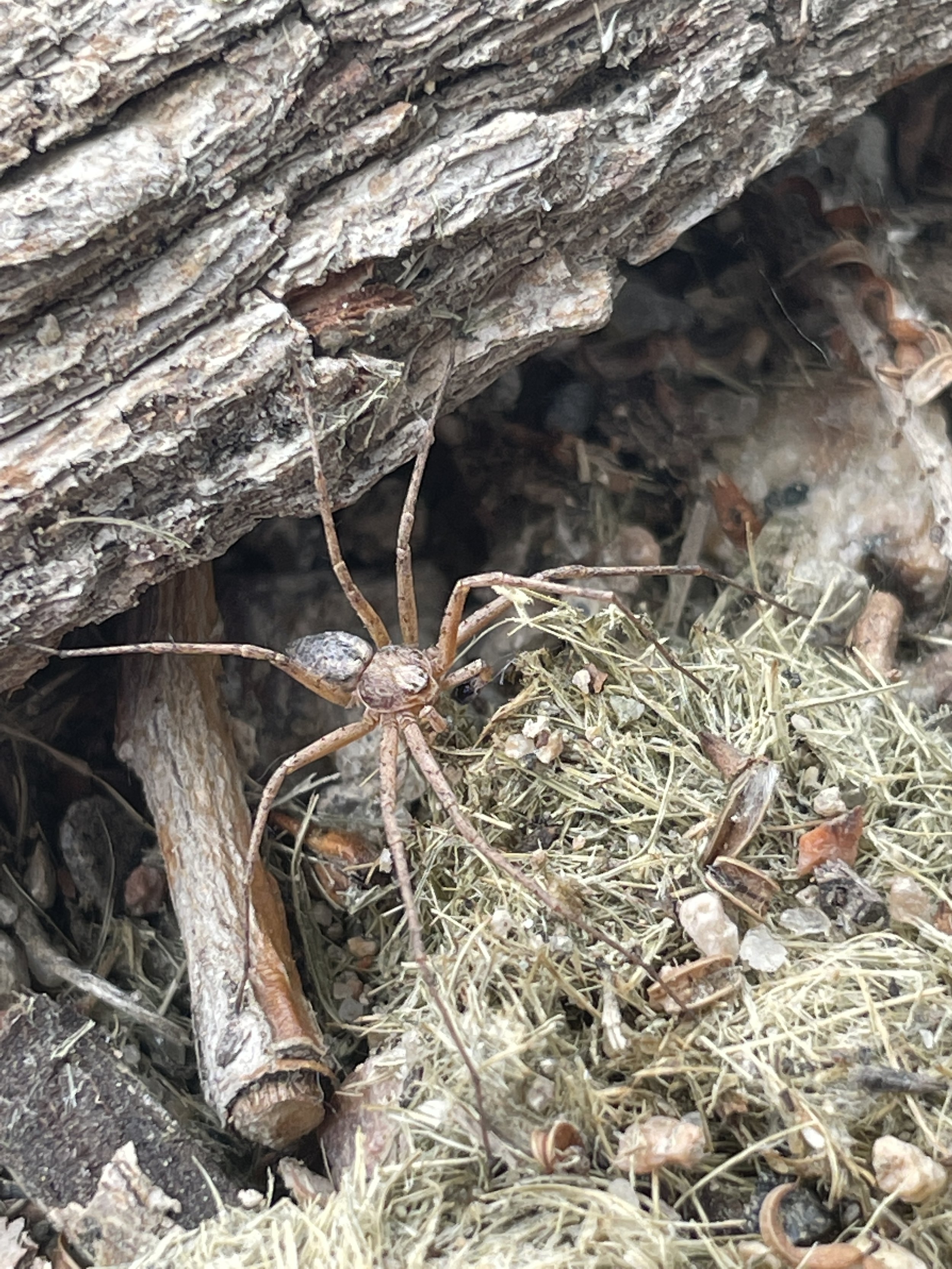
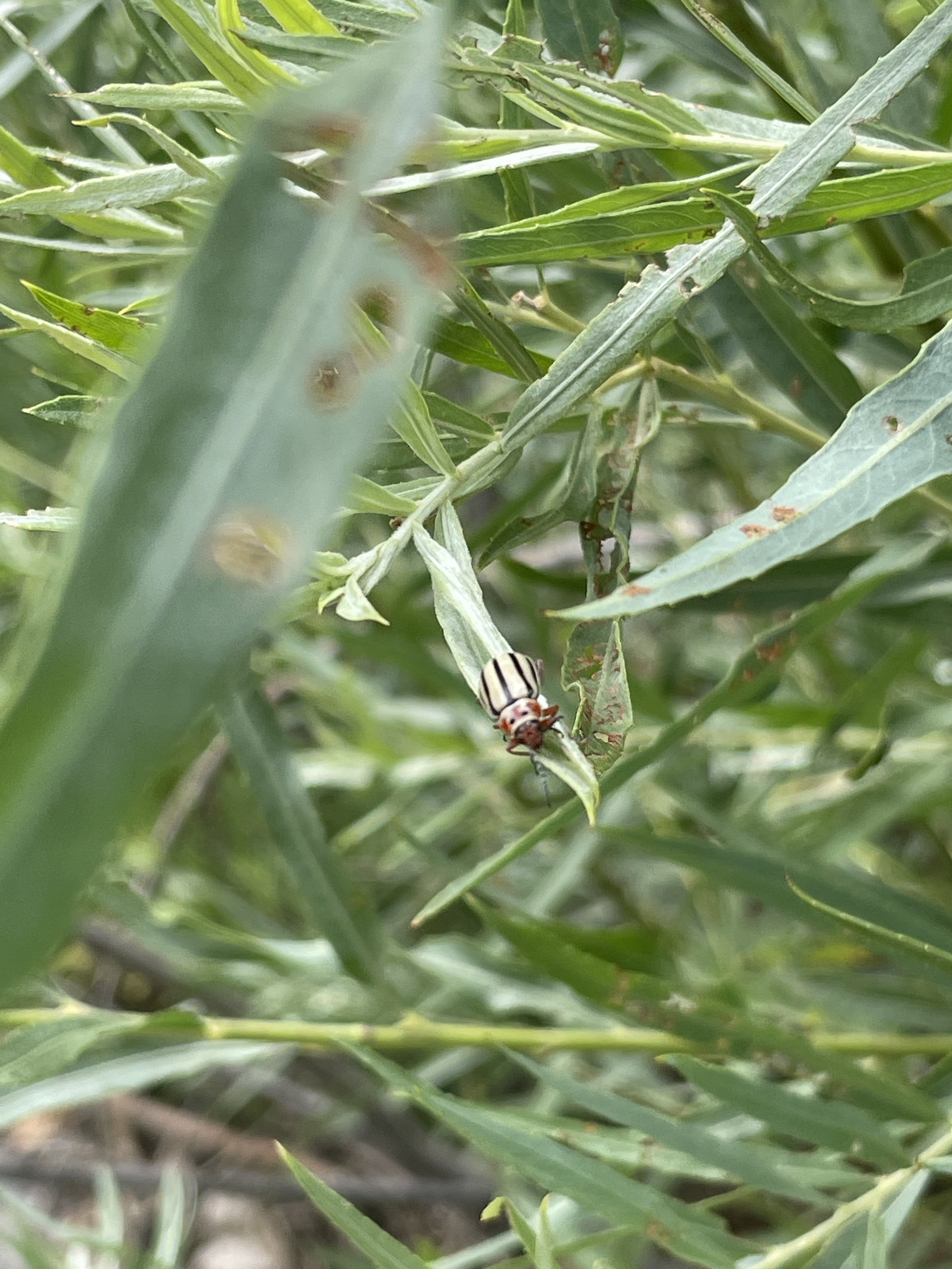


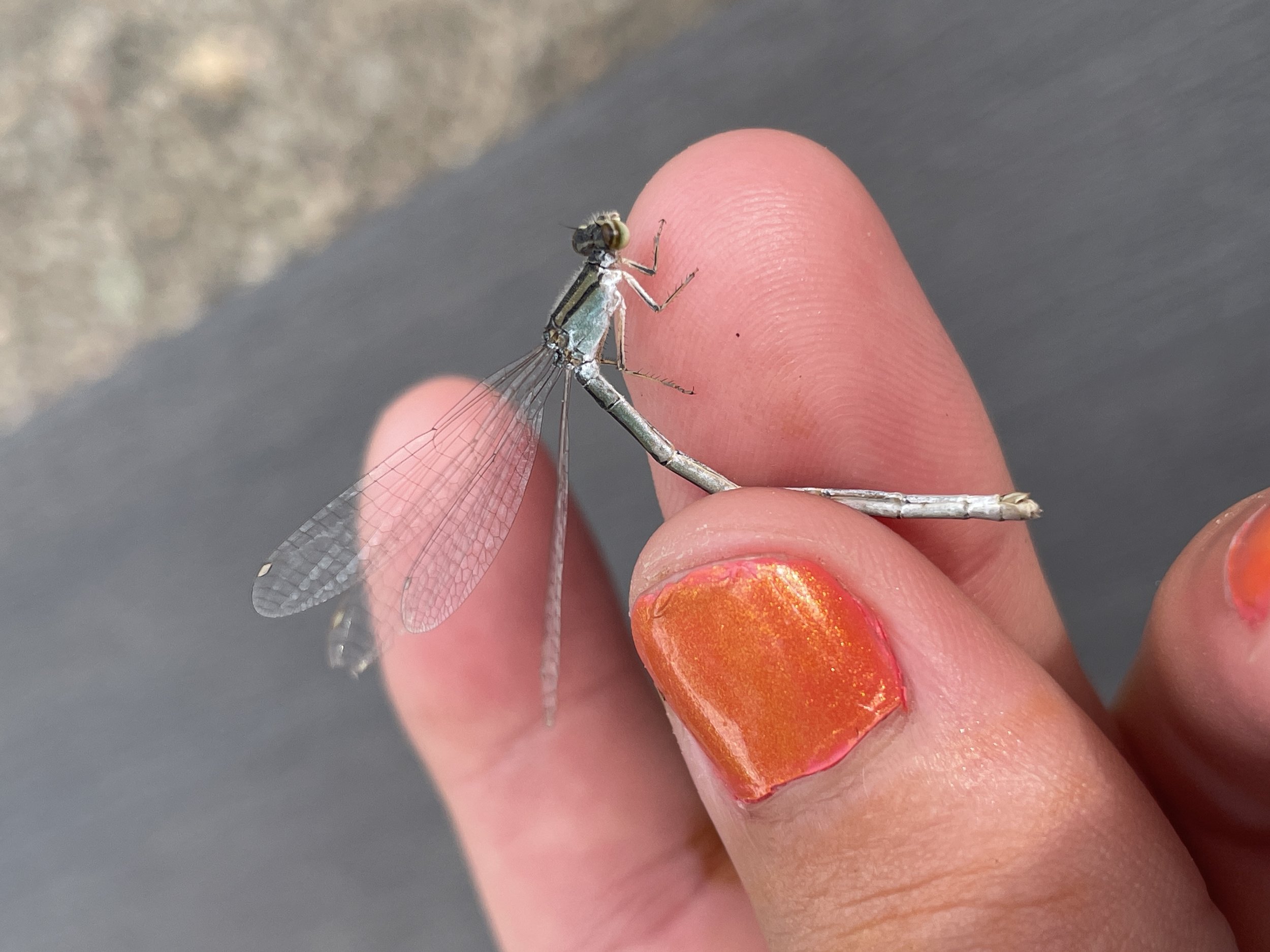
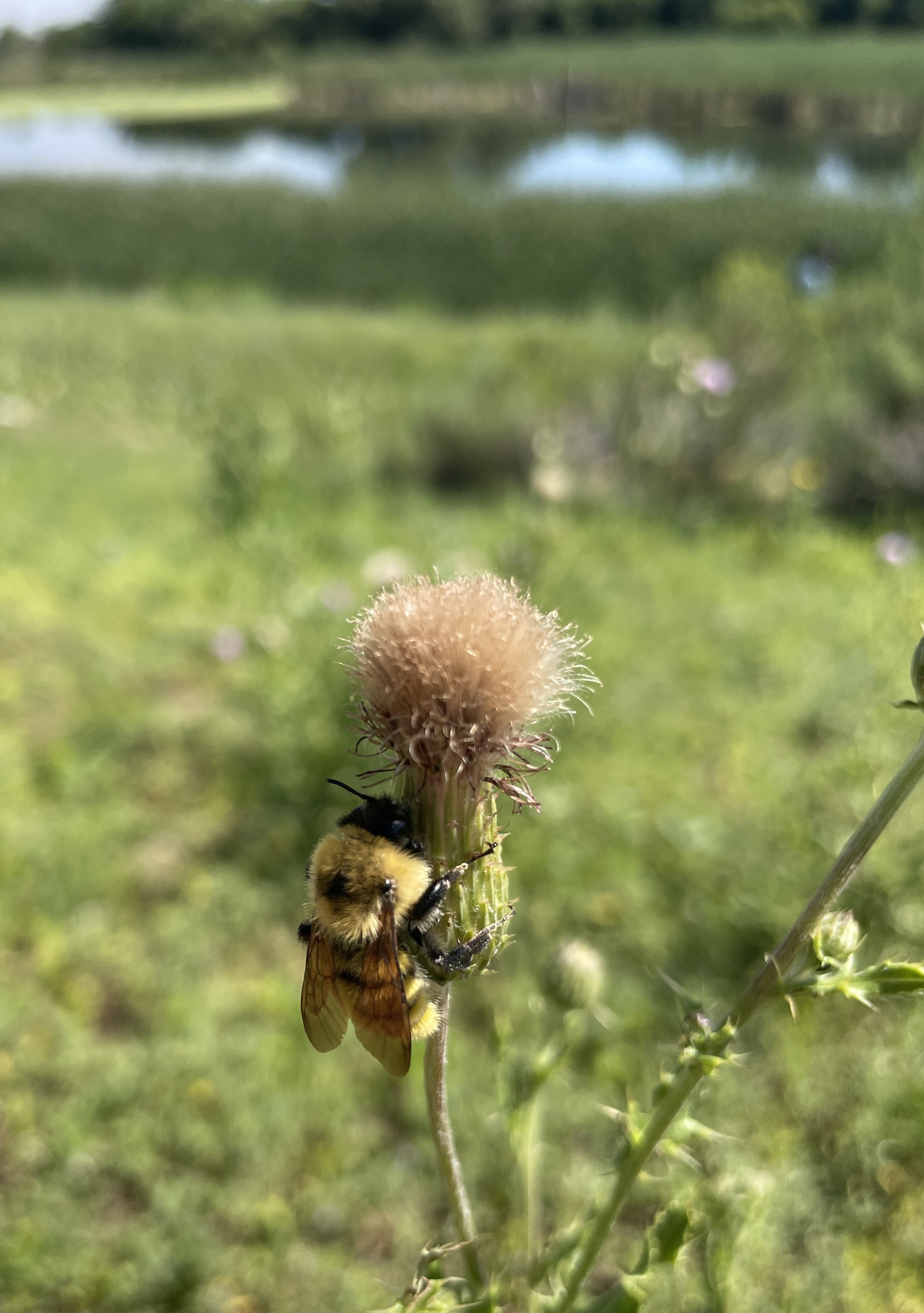


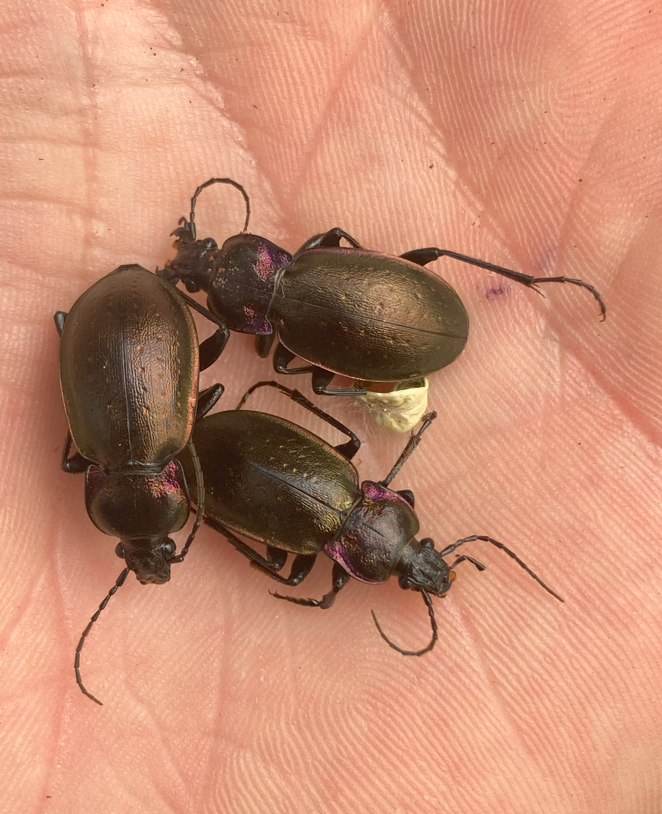
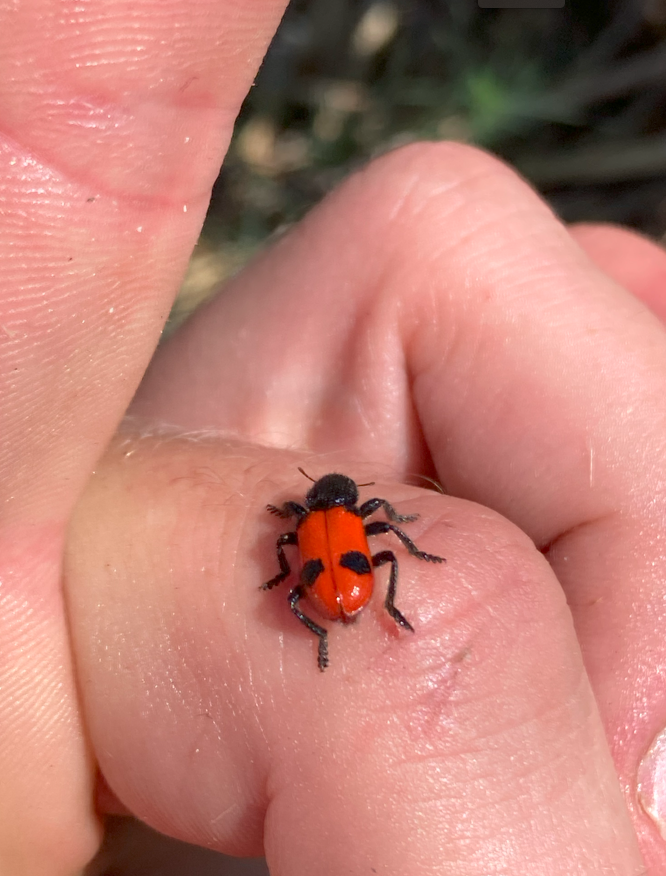
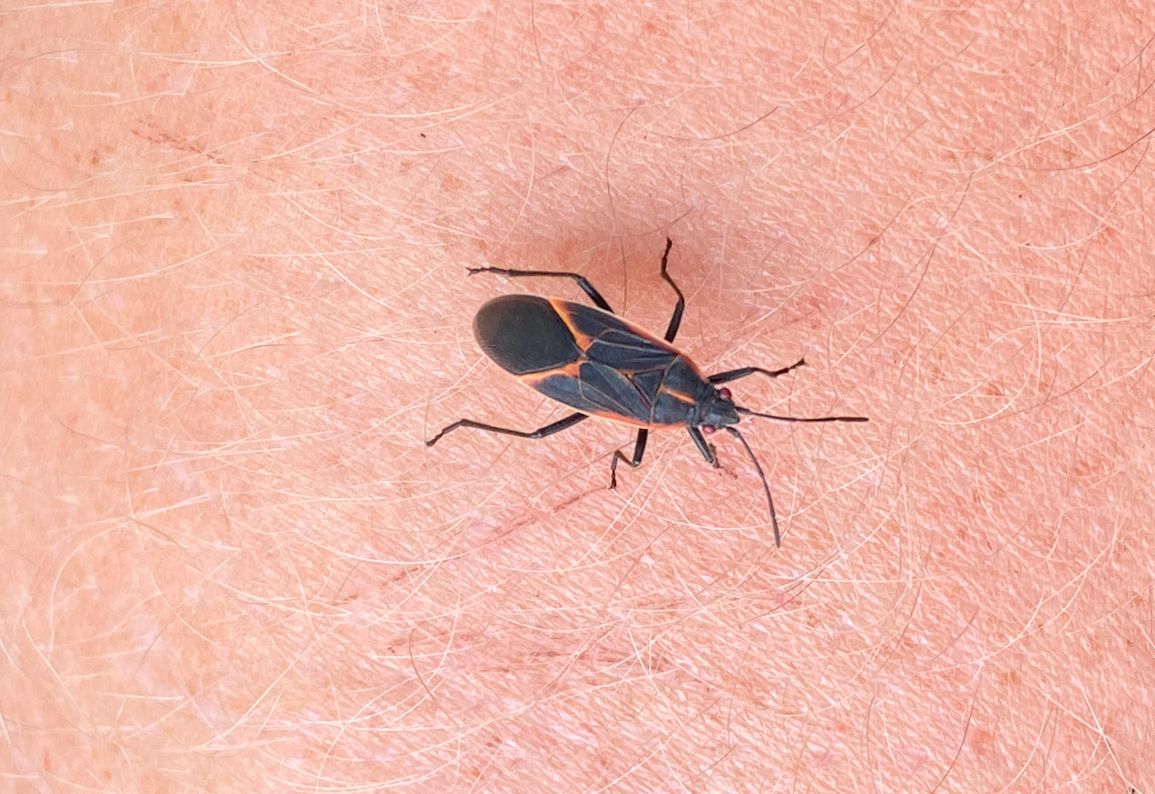
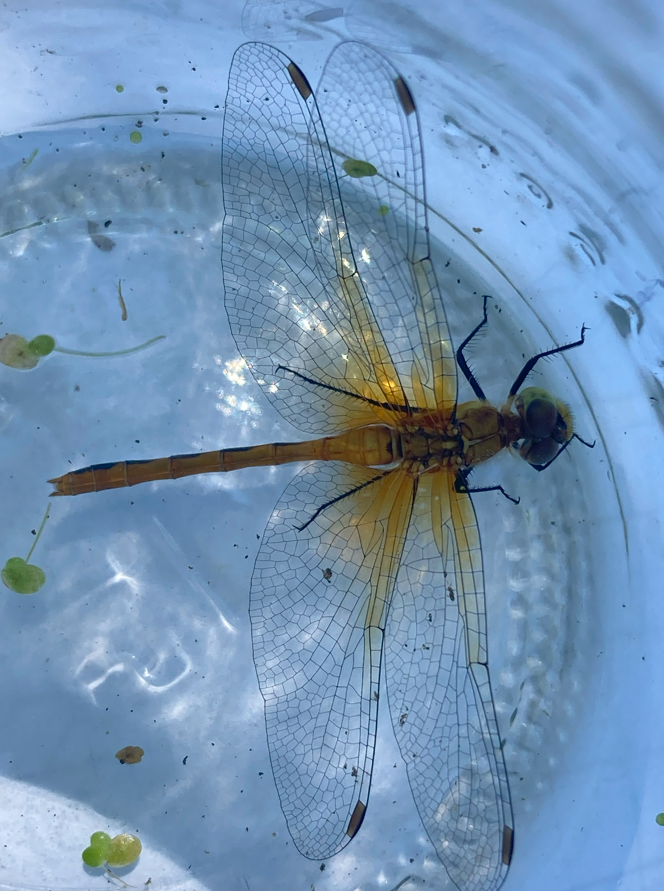
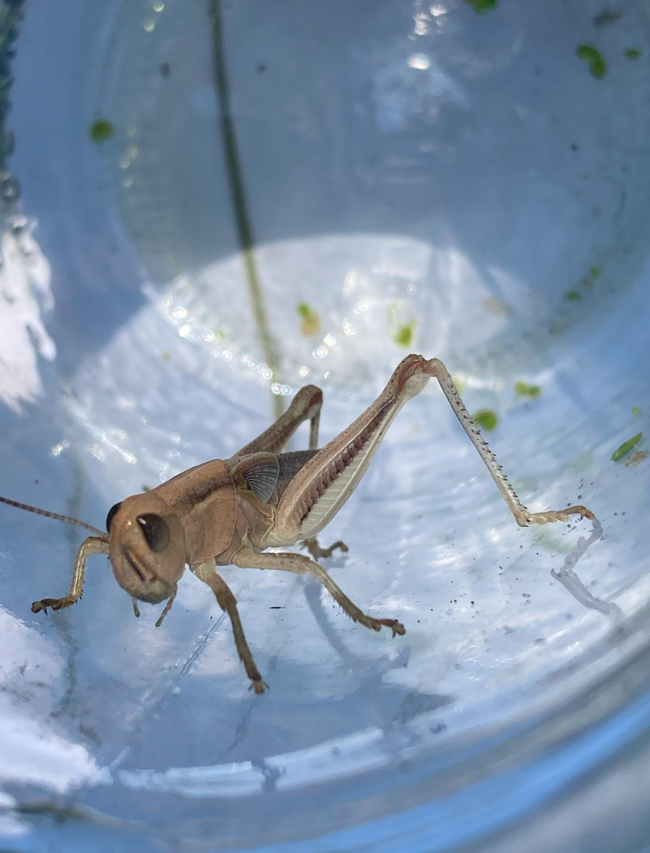
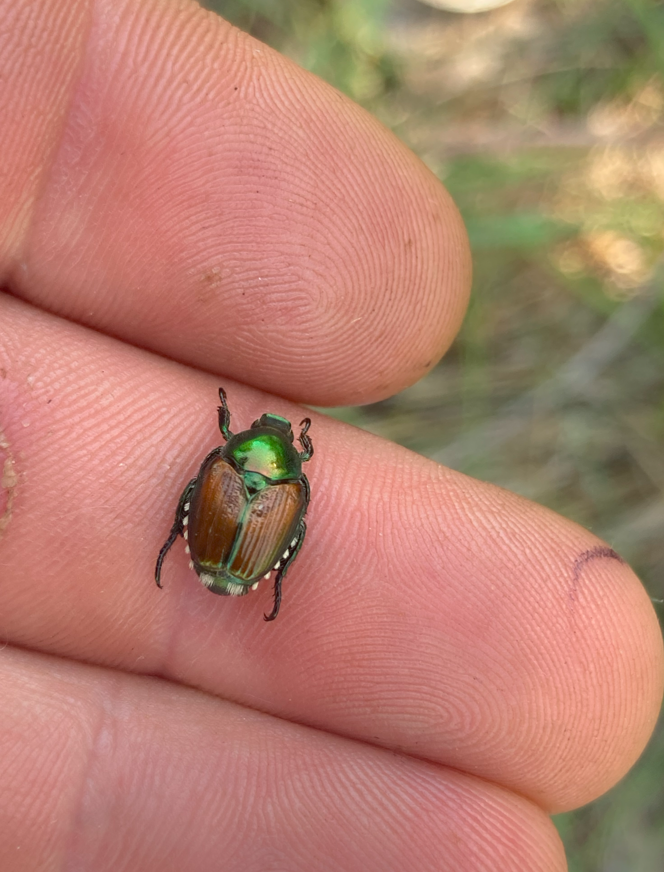
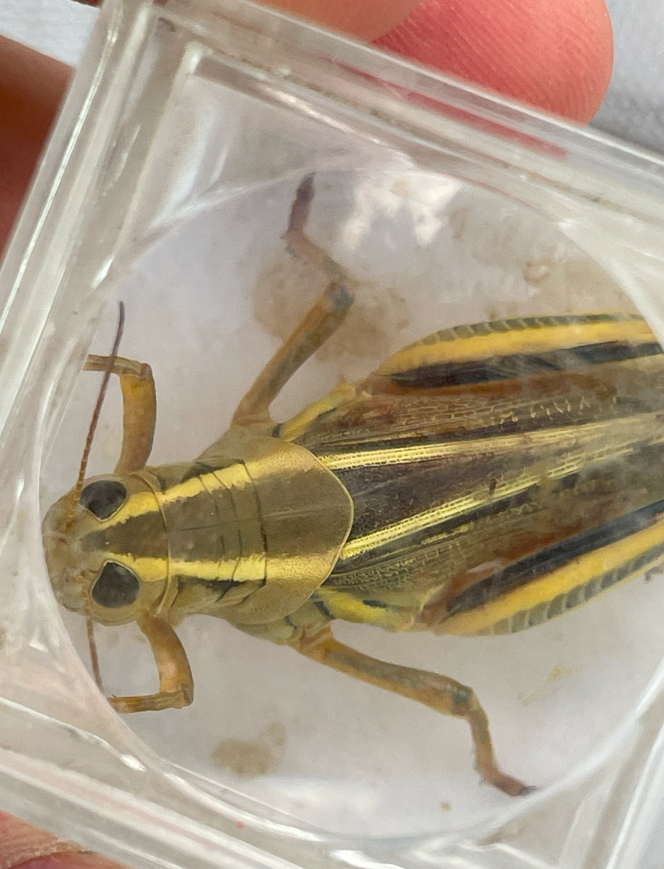

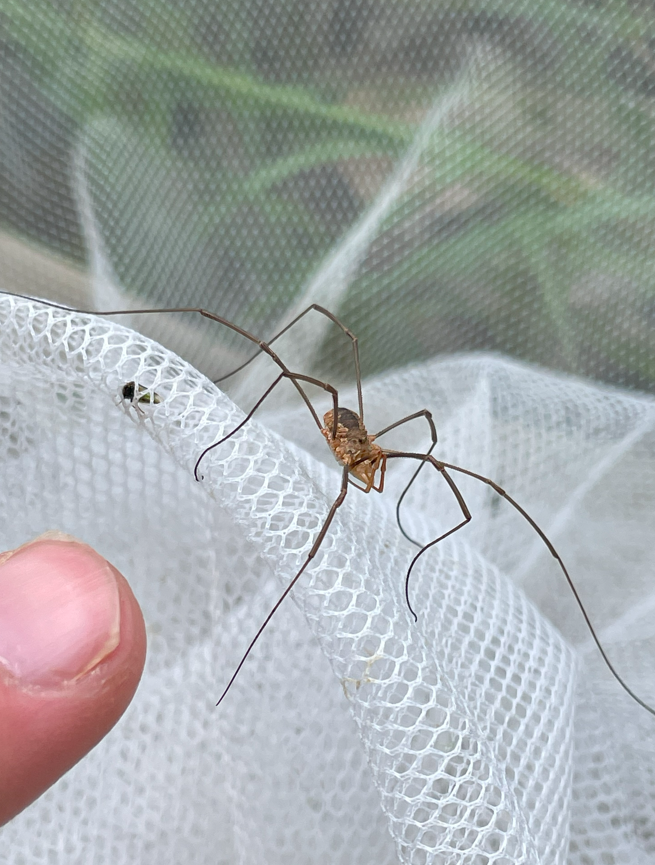

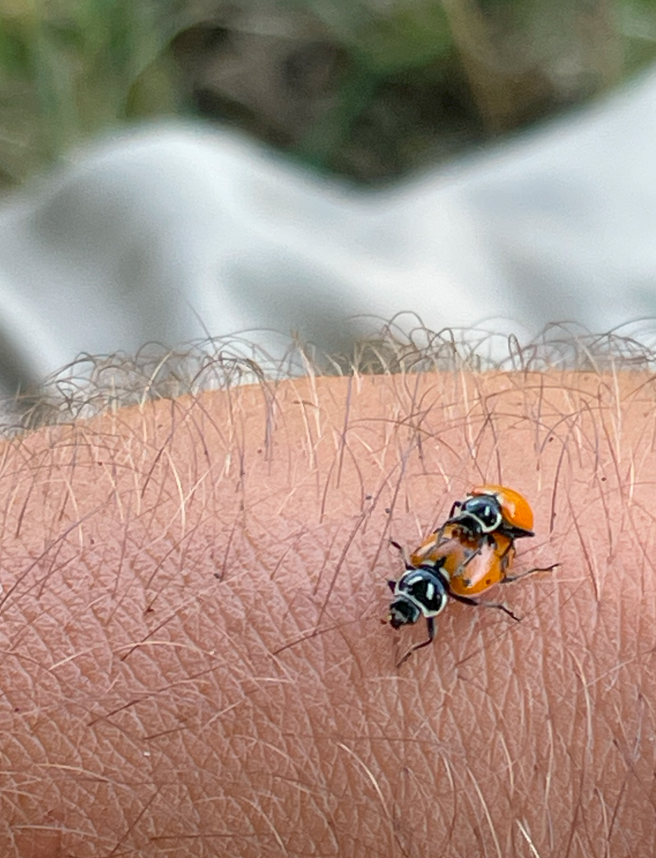
Herptile Bioblitz
The word herptile refers to all reptiles and amphibians. It comes from the Greek word herpetón, which means “creeping animal.”
To better understand the herptile biodiversity at Bluff Lake, a herptile bioblitz was done in partnership with the Colorado Partnership in Amphibian and Reptile Conservation (COPARC). Over 60 COPARC members and Bluff Lake staff participated and covered most of the site area. There were 109 observations that cataloged 12 species.
The 12 species cataloged are the following:
Bullfrog
Plains Garter Snake
Snapping Turtle
Gopher Snake (Bullsnake)
Racer
Spiny Softshell
Lined Snake
Red-eared Slider
Western Terrestrial Garter Snake
Painted Turtle
Six-lined Racerunner
Woodhouse's Toad
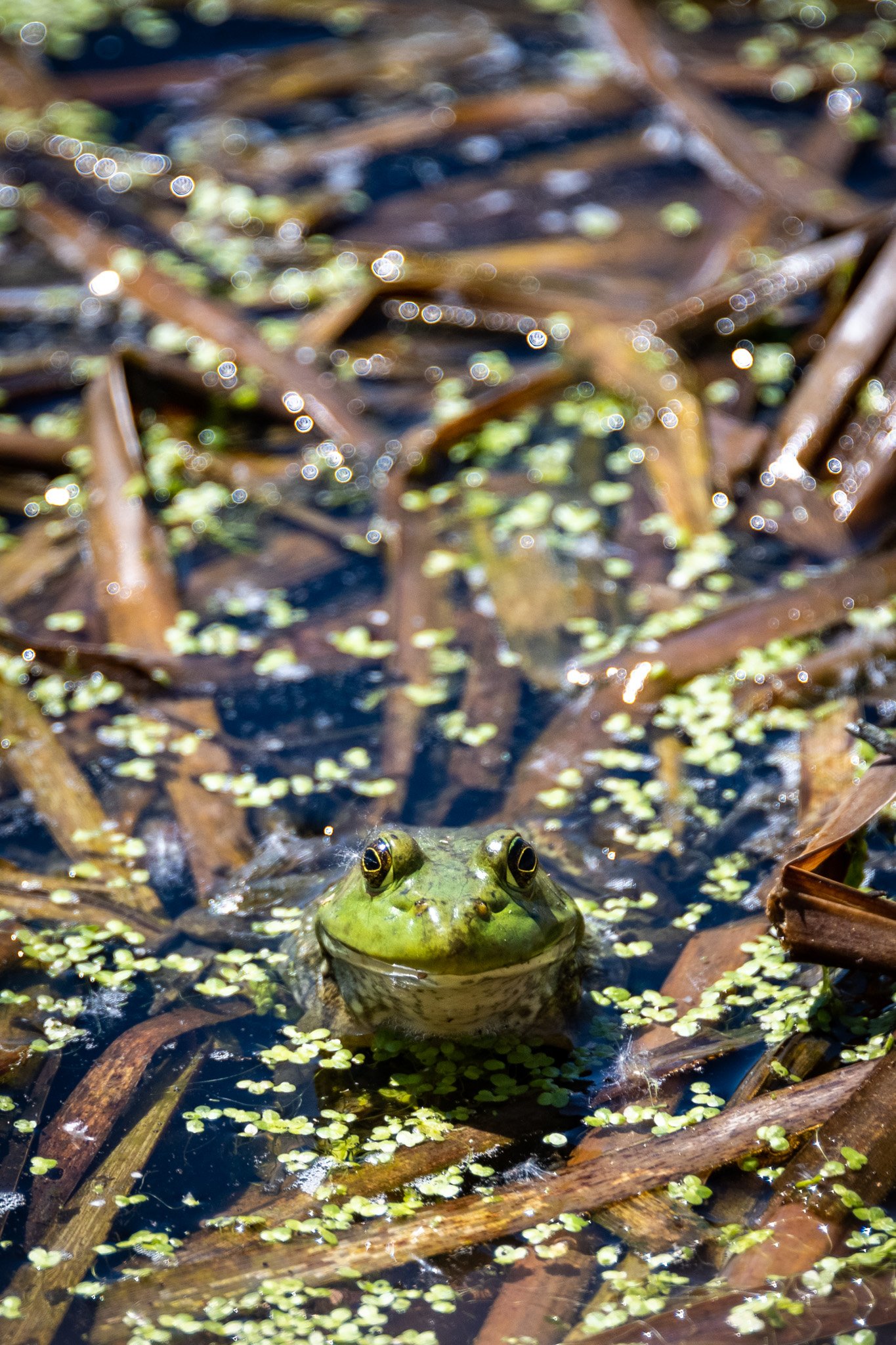

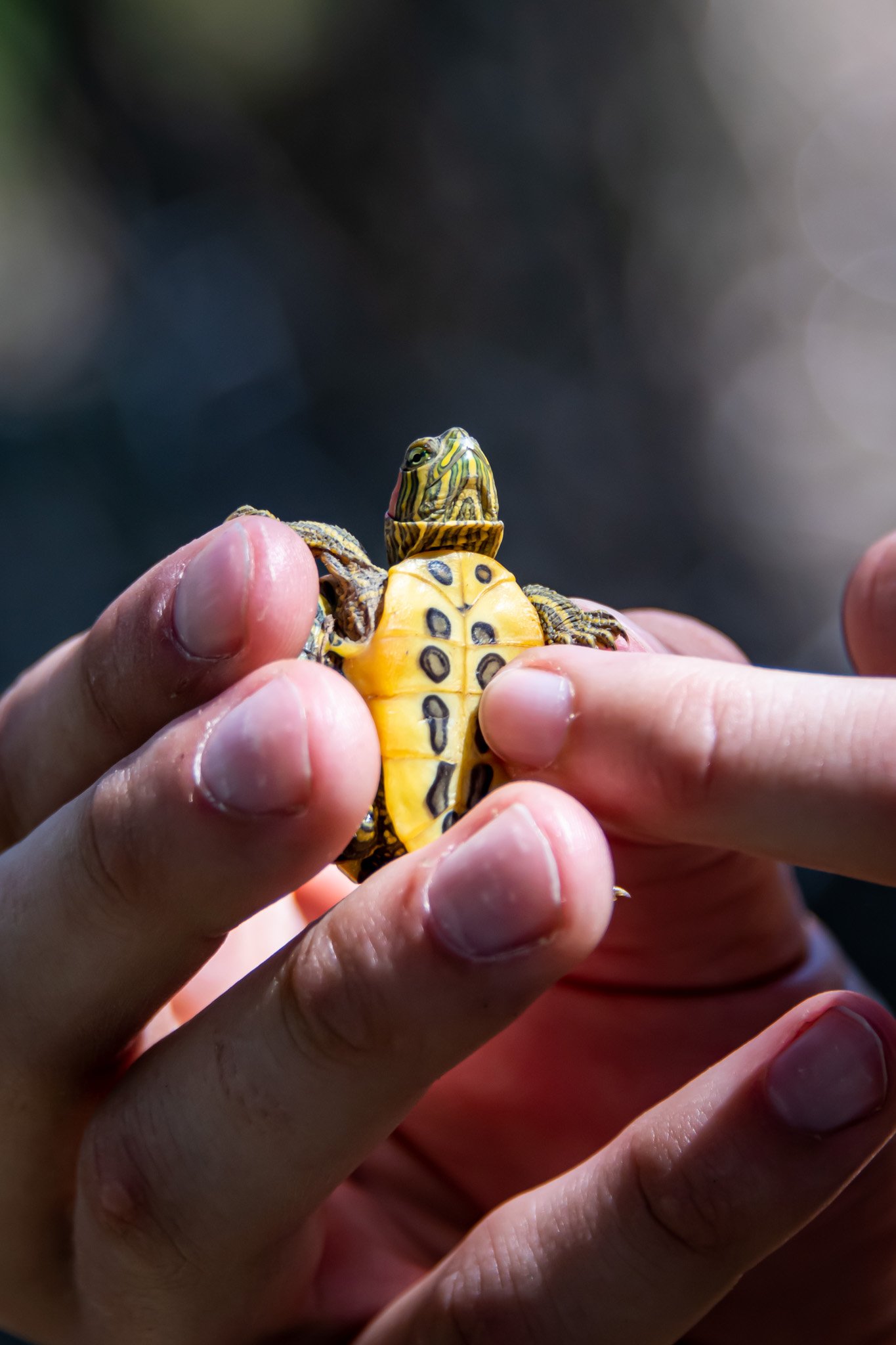
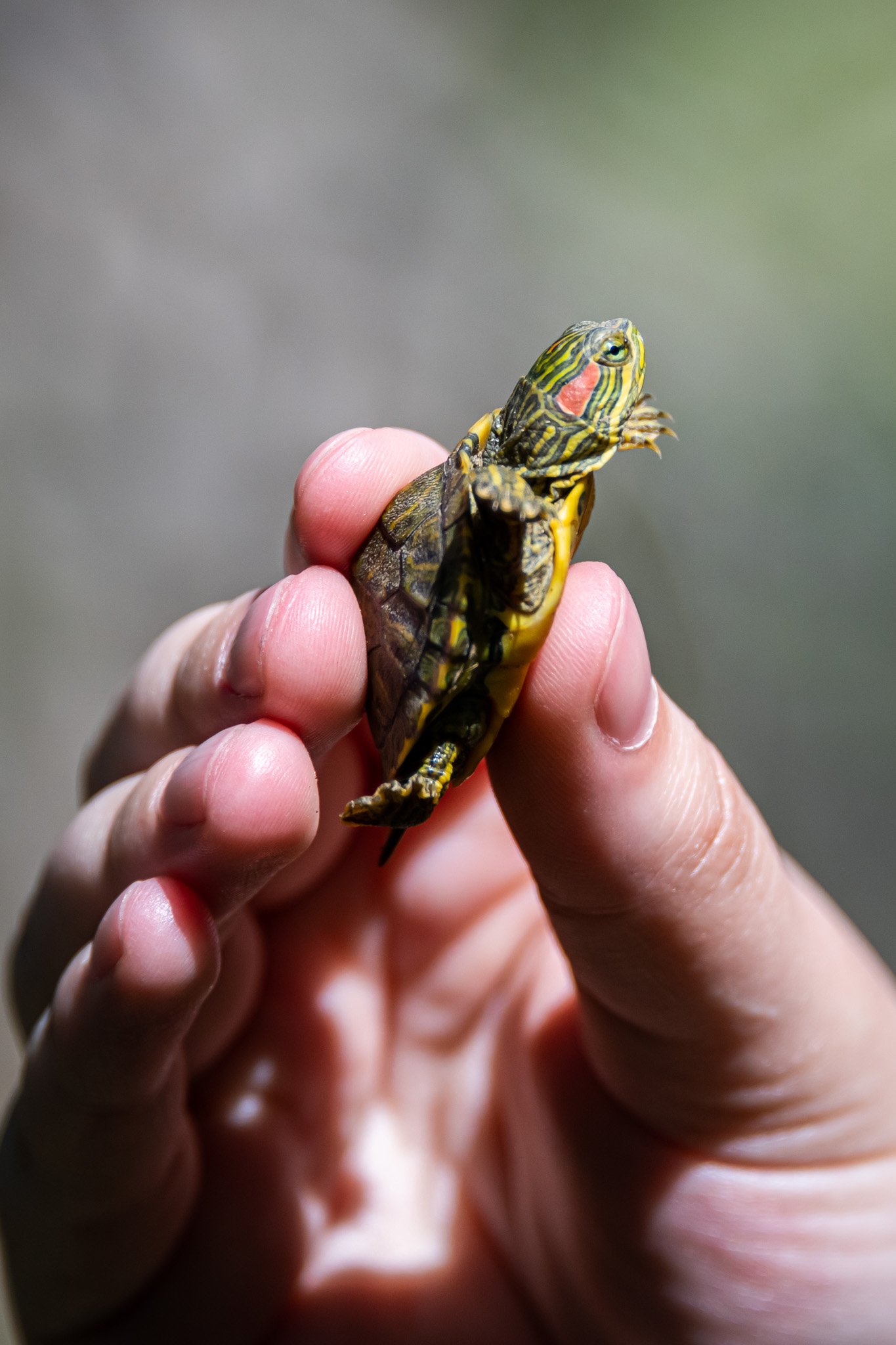
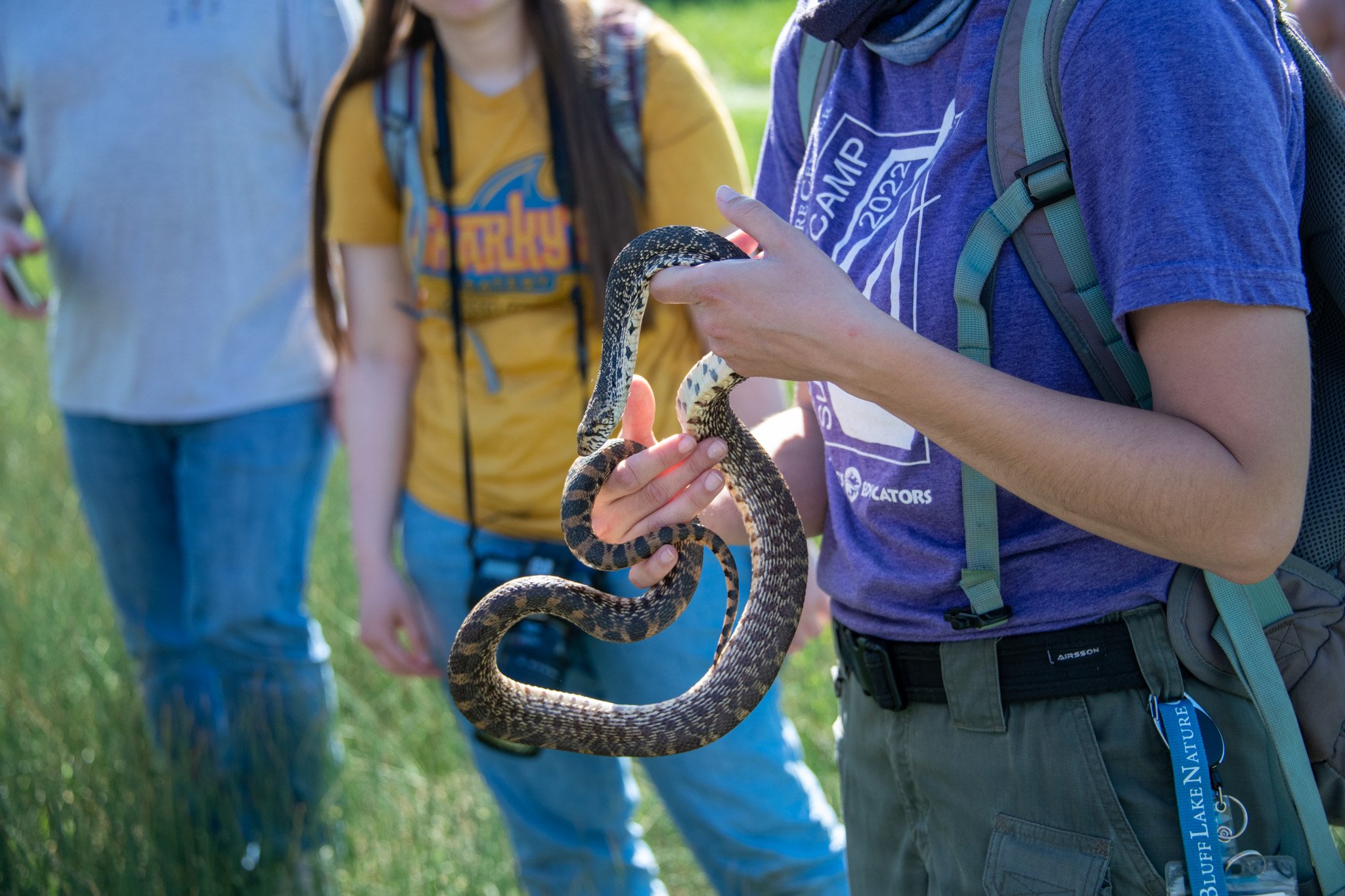
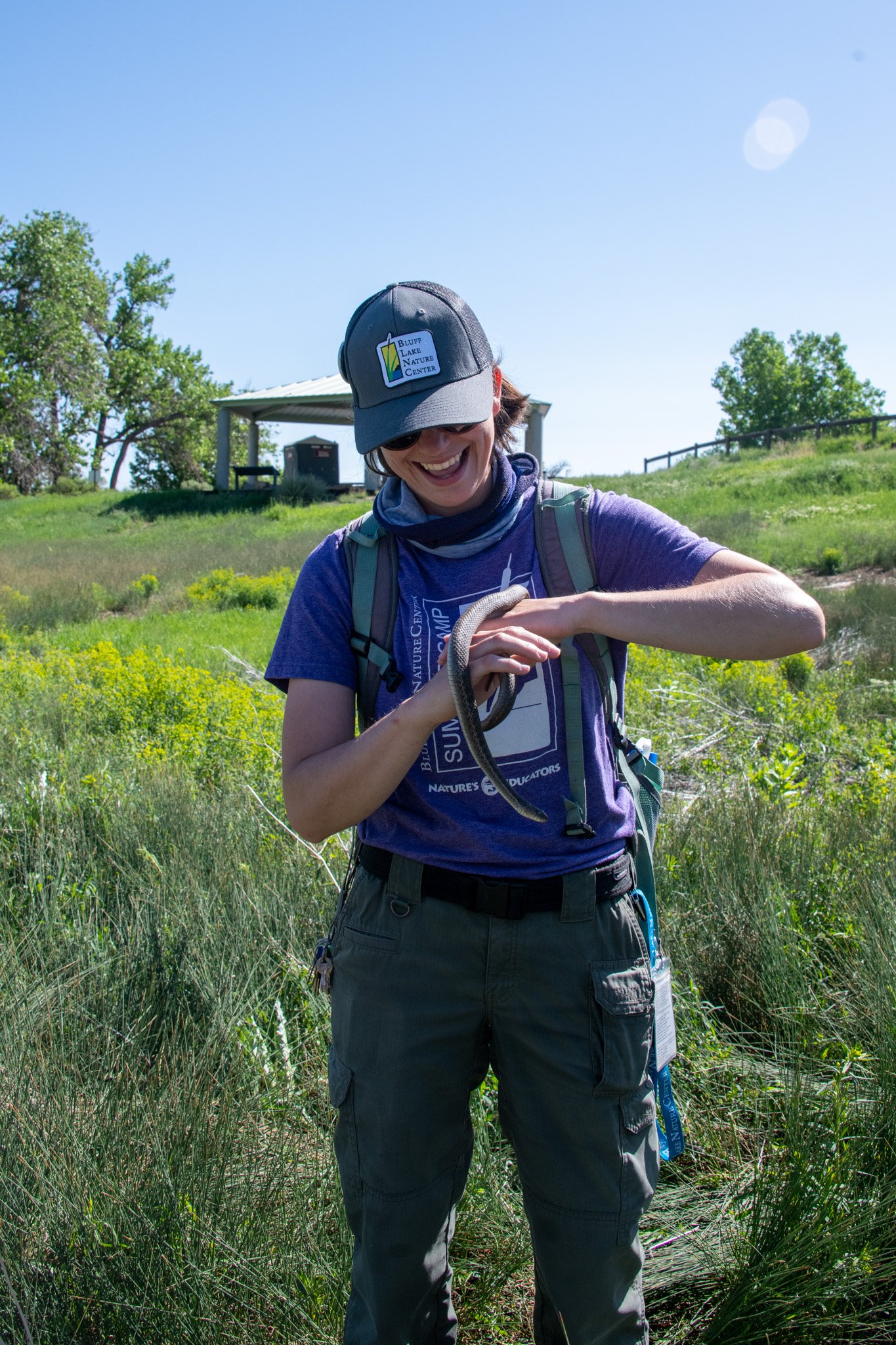
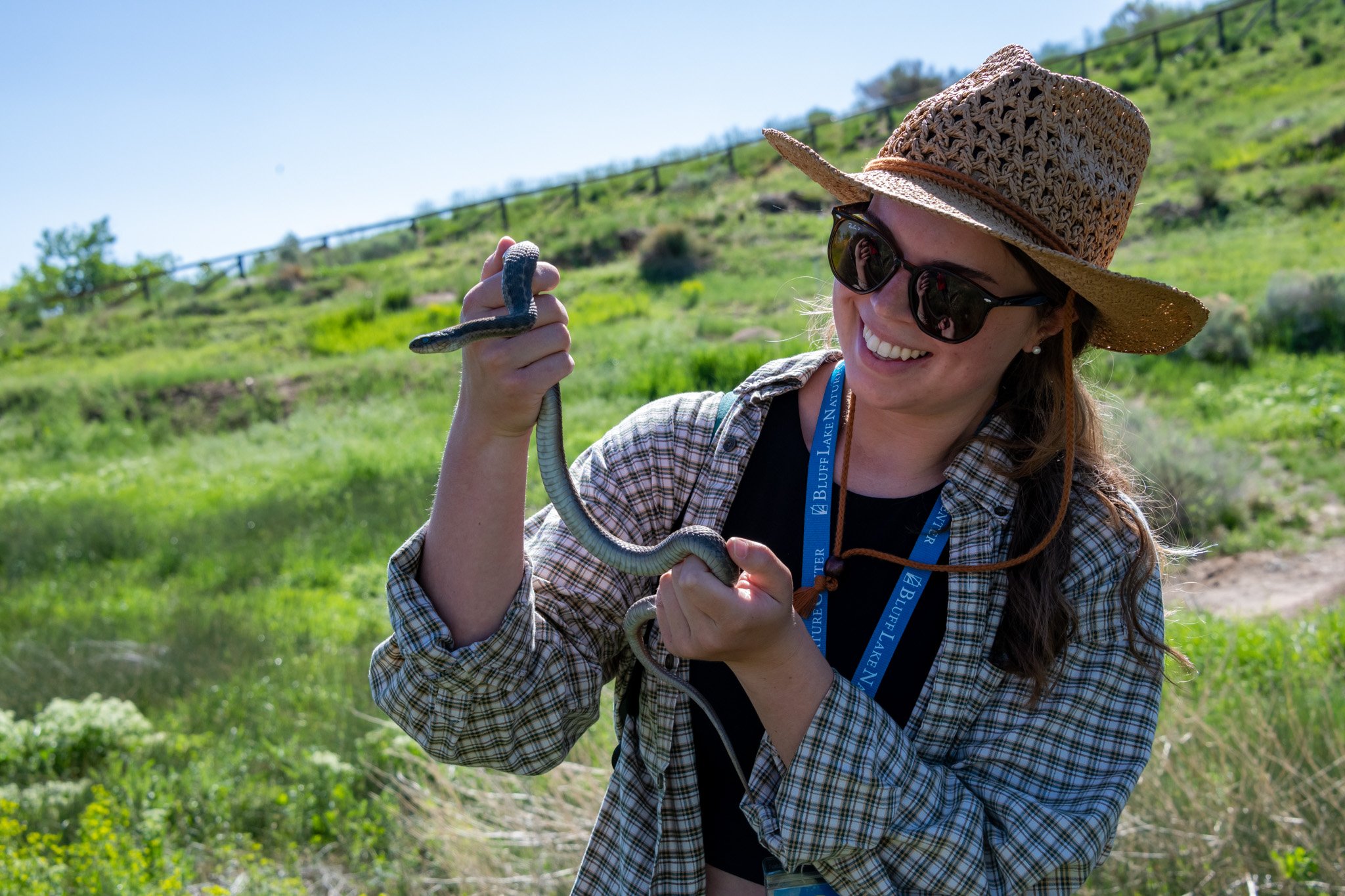
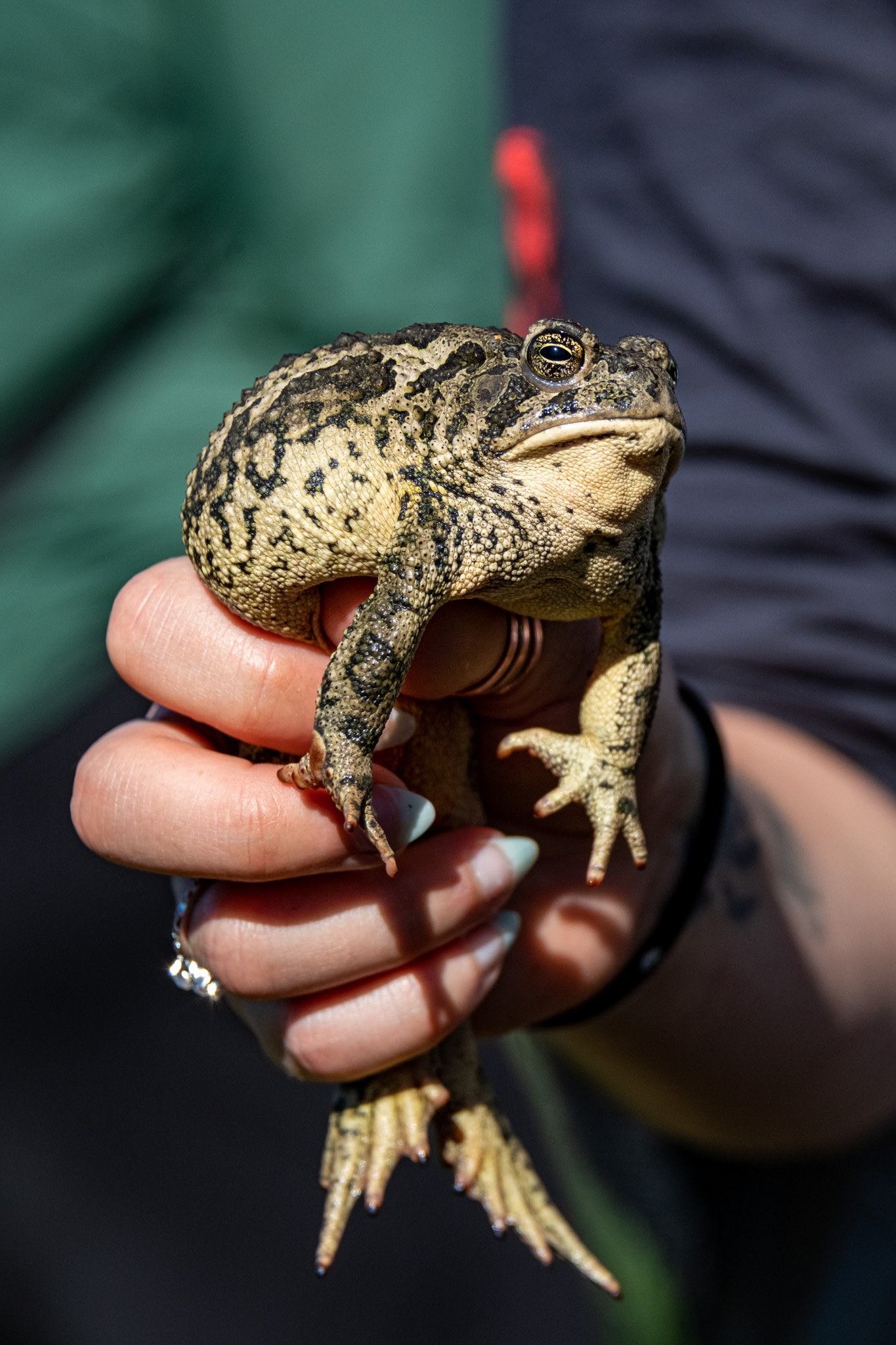
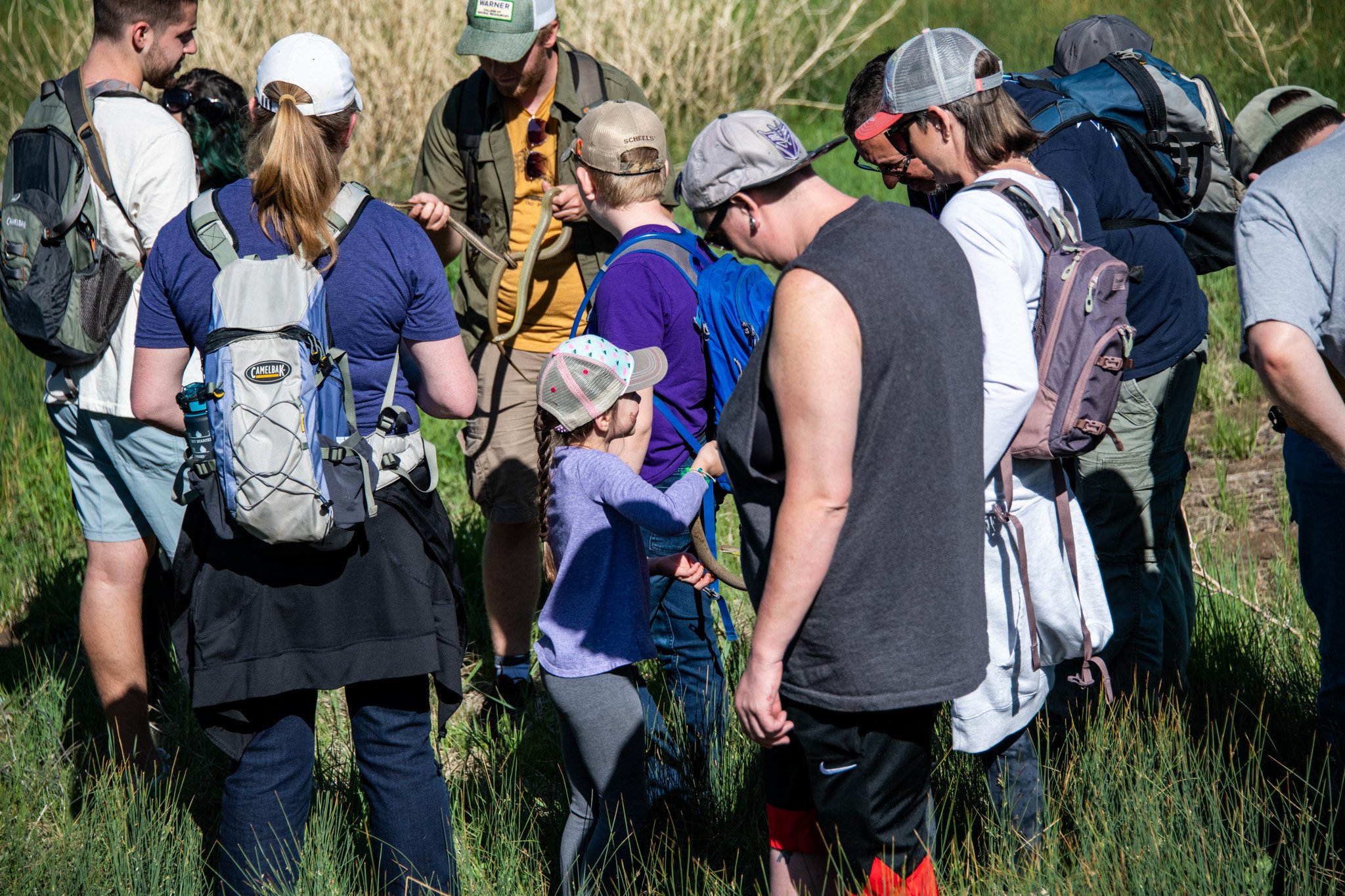
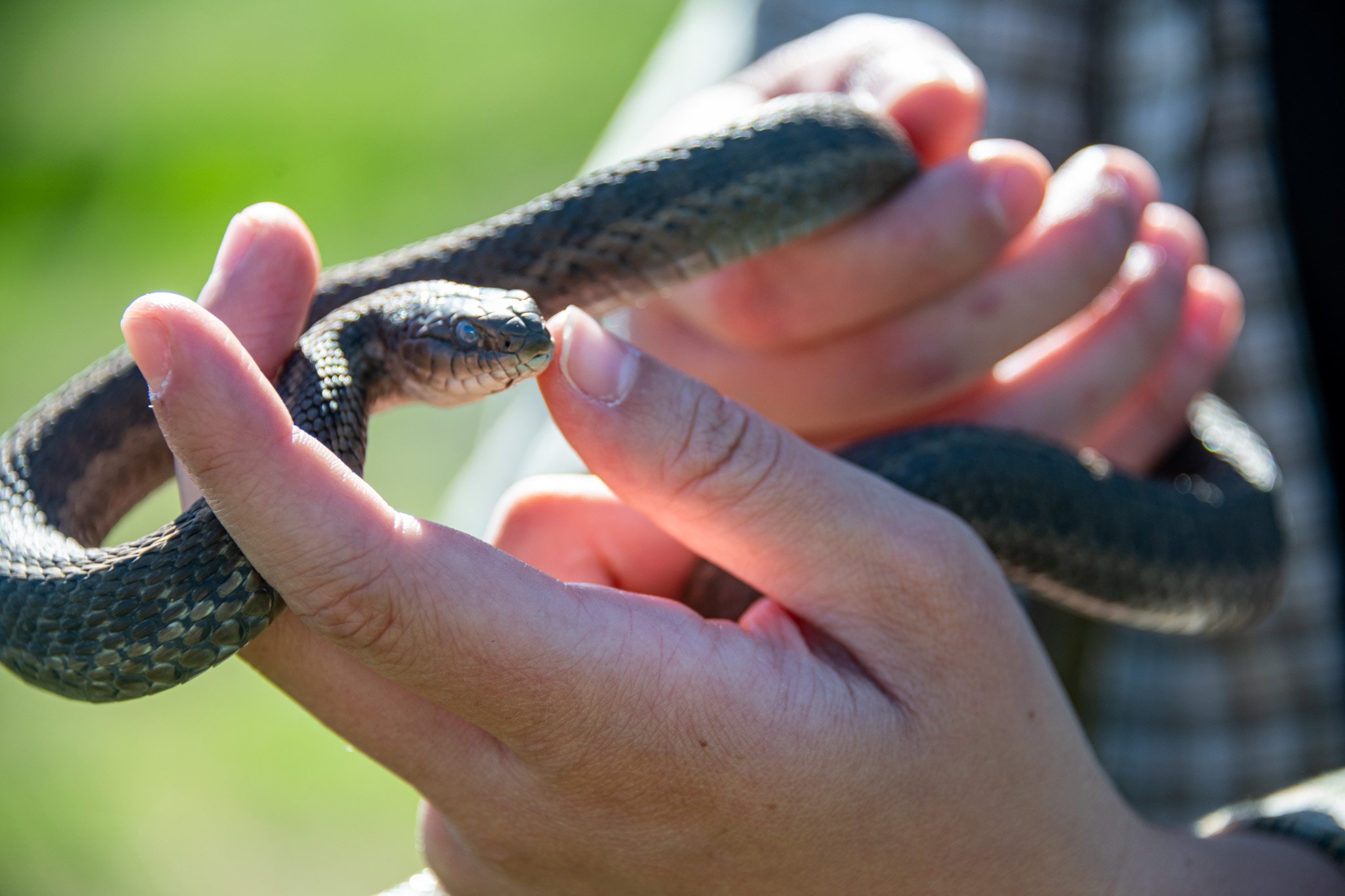
Lake Fish Survey
Despite being one of the main reasons to visit Bluff Lake Nature Center, Bluff Lake has a variety of problems that do not allow for it to support a diverse set of fish species. Some of these problems include high temperatures, low levels of dissolved oxygen, and inconsistent water levels. Therefore, no large fish species have ever been recorded within Bluff Lake. Since 2022, we have led a research survey to explore which fish species, if any, call Bluff Lake home.
In 2023, the survey consisted of using minnow traps in five different locations around the lake. The five trap locations were chosen to allow for a diverse set of conditions in which the fish species may be located. After being caught, the fish were examined for species identification, measured for length, and weighed before being released back into Bluff Lake.
Throughout the entire survey, only two species of minnows were recorded. The first being the Brook Stickleback (Culaea inconstans), and the second being the Fat-Head Minnow (Pimephales promelas). Both of these species have a high affinity for the low-oxygen waters that the lake currently supports. Other aquatic species found in the traps included dragonfly nymphs, crawdads, and water beetles. In the 2023 survey, 34 Brook Sticklebacks and 17 Fat-Head Minnows were recorded (See Table 1).
TABLE 2
TABLE 1
In 2022, most Brook Sticklebacks recorded were in the 45-49 mm length class while in 2023, most Brook Sticklebacks recorded were in the 55-59 mm length class (See Table 2). The average length in 2022 was 46.86 mm while the average length in 2023 was 59.35 mm. In one year the average length of Brook Sticklebacks recorded went up by 12.49 mm.
The Fat-Head Minnows did not see the drastic size increase that the Brook Sticklebacks did. While the average minnow length in 2022 was 61.67 mm, the average length was not significantly different in 2023 with an average length of 60 mm (See Table 3).
TABLE 3
We are intrigued by the drastic growth in the average length of the Brook Stickleback from 2022 to 2023. It is unlikely that these fish simply grew over the course of a year due to the short life span of the species as well as the fact that they reach sexual maturity extremely quickly. One additional factor is the fact that 2023 was a year with a great amount of precipitation, perhaps providing enough freshwater and food for the younger generation to grow larger. The sampling sizes across the years were not massive so perhaps the difference was a statistical anomaly.



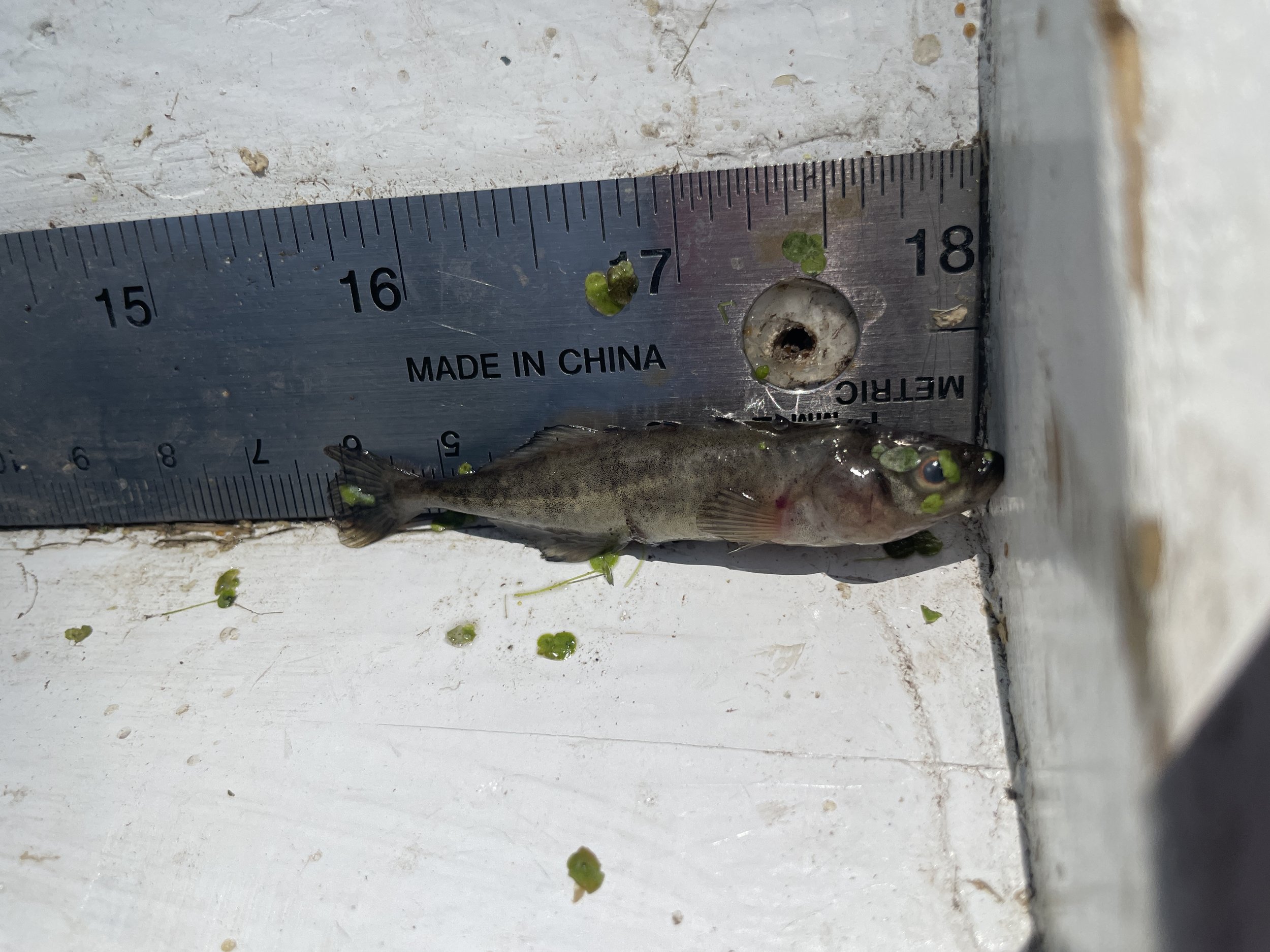




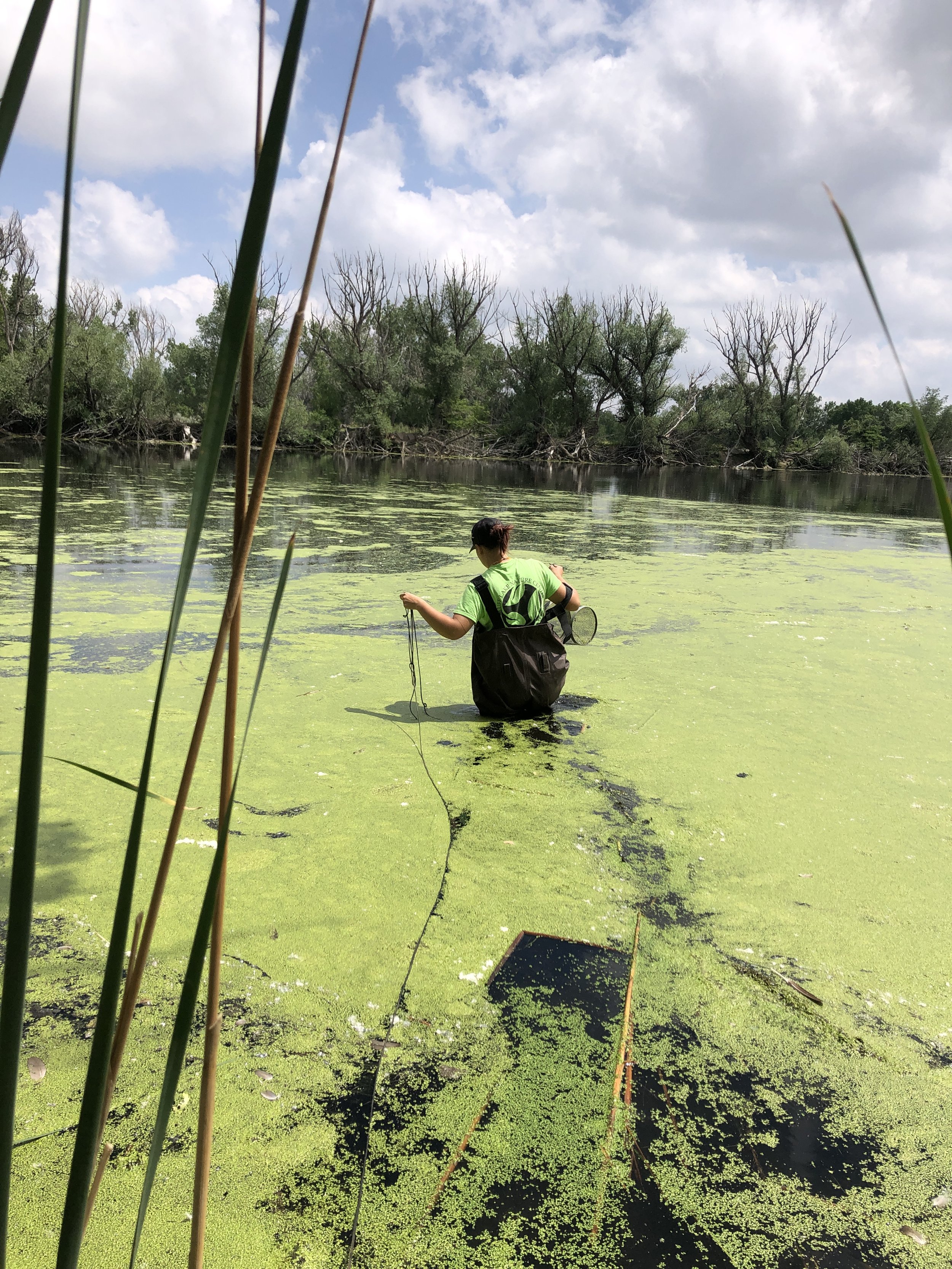

Water Quality Monitoring
One of our main goals as stewards of Bluff Lake is to monitor and improve the water quality in our lake. In 2023, water quality data was collected intermittently from June to October with a multiparameter sonde. During our surveys, we tested for air temperature, wind speed, Secchi depth (the depth at which a sonde lowered into the water can no longer be seen from the surface), and five extra water parameters. The five water parameters tested were water temperature, pH, conductivity, dissolved oxygen, and turbidity.
In the following table we have a comparison of data from the beginning and end of the summer lake season, June of 2023 and October of 2023:
This table shows the difference in water temperature between June and October with June having a higher surface-level water temperature. We can also see that conductivity levels rise as depth increases. pH levels are relatively consistent between both months and across depths. Dissolved oxygen levels were extremely low during June compared to October. Lastly, turbidity was higher in October, probably because of the duckweed covering the whole lake.
In the following table we have a comparison of June 2022 and June 2023:
In this table, we can observe surface level temperatures were higher in 2023 by 3°C. In 2022, conductivity was higher at smaller depths but lower at deeper depths compared to 2023. pH was relatively similar between both years. Dissolved oxygen was higher in 2022 compared to 2023. Finally, turbidity levels were higher in 2022.
A main finding that trended over the 2023 summer season, as well as the 2022 summer season, is that Bluff Lake has low levels of dissolved oxygen and is anoxic (oxygen deficient). These low levels are due to a process called eutrophication, where fertilizer and other chemical runoff from the stormwater that comes from the surrounding neighborhoods and buildings and feeds Bluff Lake causes excess growth of duckweed and algae. Because of the excess growth of duckweed and algae, microbes that break down plant matter consume most of the oxygen in the decomposition process.
Also, low oxygen levels are one of the reasons why there are only small minnows and no larger fish in the lake as the low dissolved oxygen levels put significant pressure on the fish and aquatic invertebrate species.








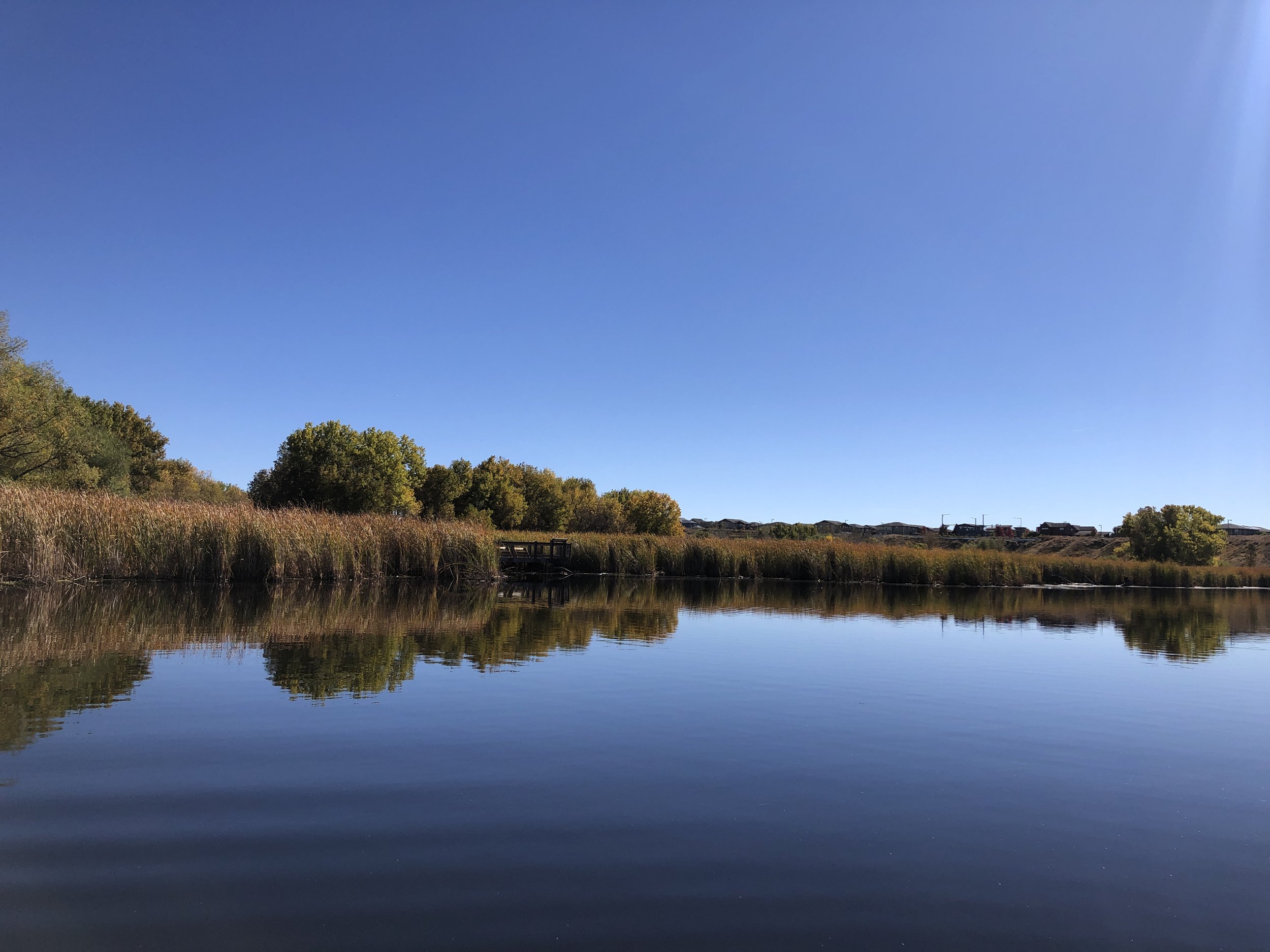
Invasive Plant Control
In 2023, our amazing volunteers dedicated approximately 500 person-hours to the removal of invasive and noxious plants at Bluff Lake Nature Center. This work was mainly accomplished by the weekly Weed Warriors volunteer group, but there were also significant contributions from a handful of corporate volunteer groups, an Eagle Scout project, Mile High Youth Corps, and Groundwork Denver.
Here is a list of the species mitigated this year, in no particular order: cutleaf teasel, poison hemlock, common burdock, curly dock, Scotch thistle, houndstongue, common mullein, tall tumble mustard, kochia, Russian thistle, salsify, musk thistle, Russian knapweed, crested wheatgrass, flixweed, phragmites, common buckthorn, Russian olive, common lambsquarter, and cheatgrass.
Hands, loppers, and shovels were used for most of the removal, and cut stump treatments on the Russian olive and buckthorn were done using hand saws, chainsaws, and herbicide.
We contracted Weed Wranglers, a weed management business, twice this year to continue a more aggressive weed removal work with plants that don’t respond to mechanical removal. Using backpack sprayers and ATVs outfitted with booms, they focused on treating leafy spurge, Canada thistle, whitetop, and Russian knapweed with selective herbicides throughout the site. They also did an application of herbicide on the phragmites patch on the north side of the dam to work on managing the patch.









